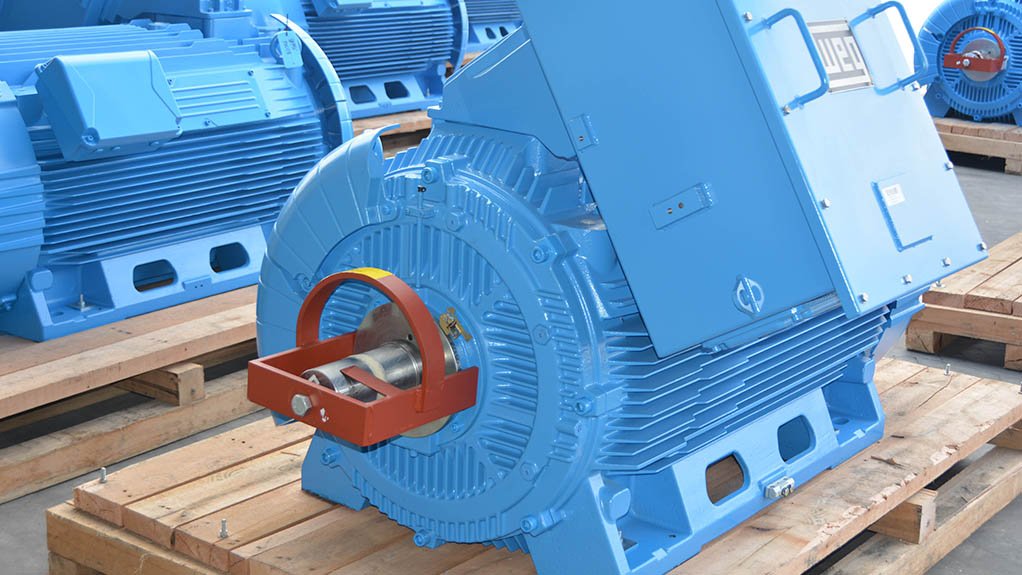Critical applications that require a high degree of reliability and longevity are said to benefit from the use of medium voltage (MV) electric motors which are tailor-made for specific tasks, and offer better longevity and reliability, reducing the risk of failure-related disruptions.
According to Zest WEG HV motors sales specialist Floris Erasmus, the benefits of MV electric motors includes their application-specific design and protection features.
“Any motor application – from pumps and fans to crushers and conveyors – can present a critical risk if a significant portion of the whole operation relies upon it,” says Erasmus. “In these cases, it is often worth considering the MV motor option in new projects or in circumstances where motors are being replaced.”
While the category of Low Voltage (LV) electric motors ends at about 1 000 V, MV motors range from 1 000 V to 33 kV. In the South African market, the upper end of the MV range is usually 11 kV, explains Erasmus.
“MV motors are generally not off-the-shelf, and are rather specially designed for their application,” he says. The construction is also different to an LV motor, as the wire used in the windings is more like a rectangular bar and normally covered with mica tape to make up form-wound coils.
“The coils are individually wrapped with thicker insulation to accommodate the higher voltage,” he says. “There is only one turn in a slot, so there is no potential difference between turns; this means that there is less chance of an inter-turn failure or short circuit between coils.”
The winding of a MV motor is conducted using vacuum pressure impregnation and the use of an epoxy resin. Applying the resin in a vacuum removes air and moisture, which allows the resin to flow more effectively into the spaces between the steel core and the copper winding, leading to reduced risk of winding failures as a result of air pockets in the slot of the stator.
“Another benefit of MV motors is their low starting and operating current,” explains Erasmus. “The kilowatt rating of a motor – the power it consumes – is a function of the voltage; by raising the voltage, the amperage drawn in reduced.”
The starting current of a motor tends to be about six times higher than the operating current, he points out. By reducing the operating current, an MV motor helps to reduce the strain that high starting currents can place on the electrical system in a mine, plant or factory.
Erasmus adds that MV motors are also an advantage in the use of variable speed drives (VSDs), as the transformers that are part of the MV motor installation ensure that no extra filters or add-ons are required to achieve near-perfect sine waves. MV VSDs are also said to be better at disrupting harmonics in the electrical system.
Protection systems on MV motors help ensure longevity. The motors are usually electrically protected with a smart relay which is password-protected, making it difficult to by-pass the overload systems that protect the motor, and preventing the motor from being started under fault conditions.
WEG has recently launched its W51 range, which includes MV motors. Availability is from a 315 frame to 450 frame, which, with four-pole motors, translates to a range of 132 kW to 1 400 kW. The standard range reaches 6 6 kV but motors up to 11 kV can also be requested. The range includes motors for hazardous areas, where gasses susceptible to ignition may be present.
EMAIL THIS ARTICLE SAVE THIS ARTICLE
To subscribe email subscriptions@creamermedia.co.za or click here
To advertise email advertising@creamermedia.co.za or click here













